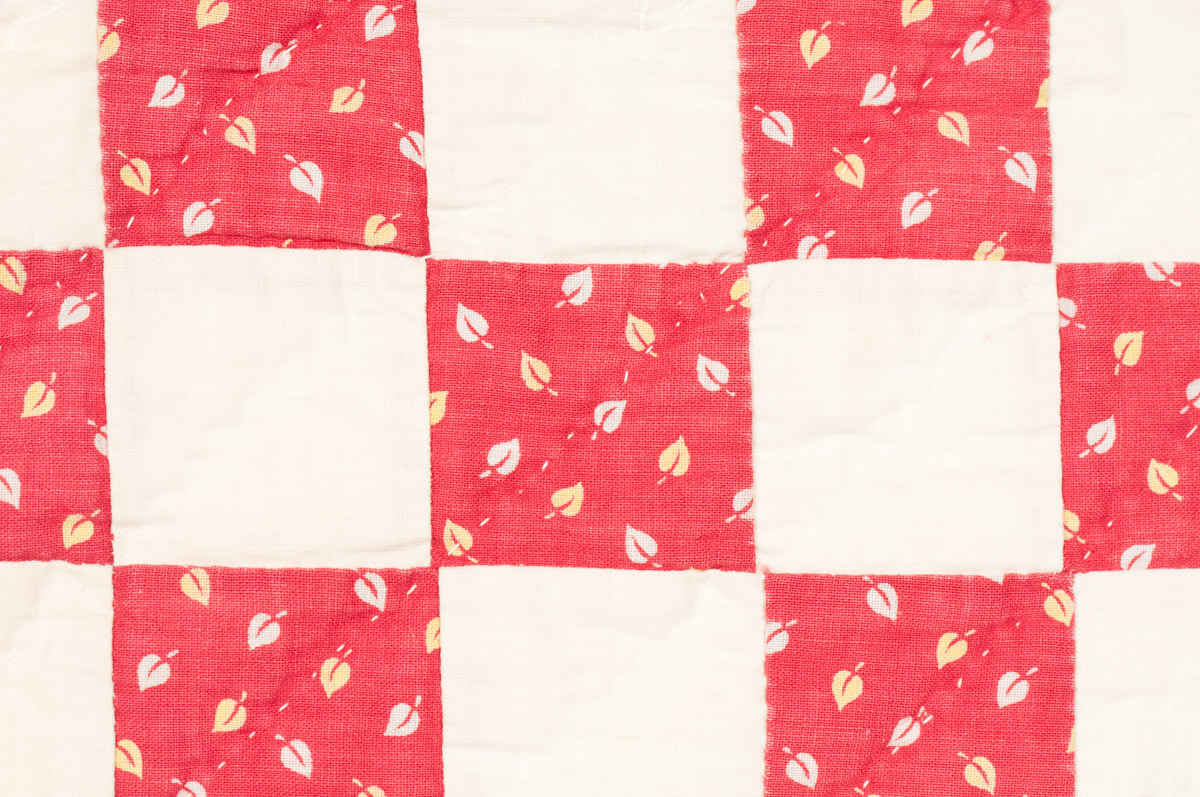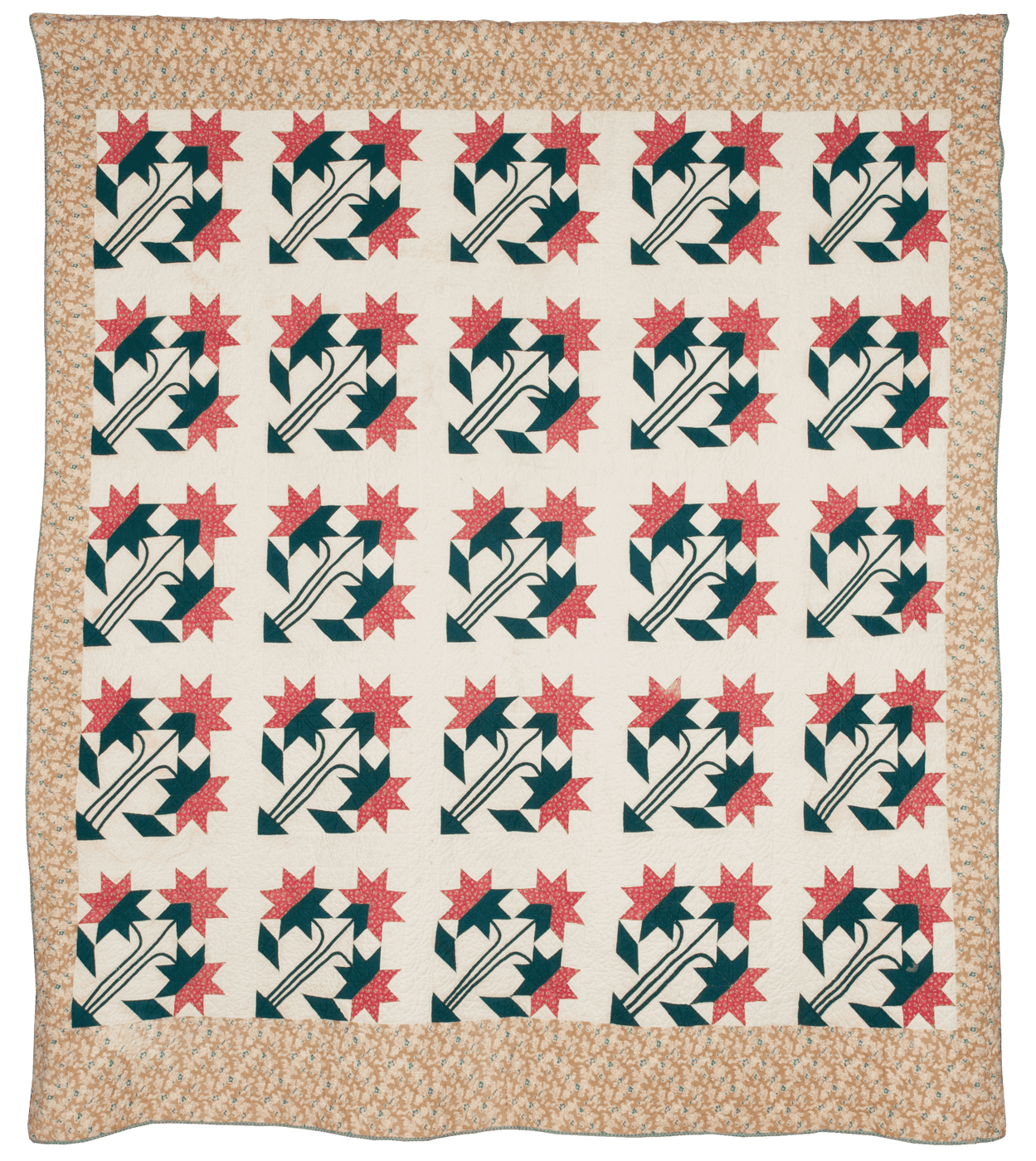Double Irish Chain
Designed by Tabitha Meek Campbell (1822-1889)
Spartanburg County, SC
ca. 1860
Gift of Sarah M. Norton
McKissick Museum Collection 6.1803
Hand-pieced and quilted, two-color, cotton quilt in a pattern that textile scholar Barbara Brackman has documented in the United States as early as 1814. It has been widely used ever since. Brackman speculates that the pattern might have been adapted from a weaving pattern. Needleworkers historically used the large, solid-colored fabric blocks in this pattern to showcase special design motifs and fine quilting skills. In the case of this quilt, the maker elected to simply quilt the entire top with diagonal lines, rather than with a showy design.
North Carolina Lily
Tabitha Campbell Norton
Tabitha Atkinson Meek Campbell (1822-1889) 6.1803
Tabitha Meek was born in Laurens County, the daughter of Dr. John Meek and Sarah Spraggins Meek. Her father was a doctor, minister, and landowner. Sarah passed away in 1825, when Tabitha was only 3 years old. Two of her siblings, Thomas and Nancy, died that same year.
After marrying Dr. Robert Erskine Campbell in 1839, they lived in the town of Cross Hill and he practiced medicine throughout Newberry County. A year after they married, her father moved to Union County, Arkansas and is credited with founding many of the early Baptist churches in southern Arkansas and northern Louisiana. In a letter dated 1842, Dr. Meek expressed how much he missed his son-in-law Robert and his “dear Tabitha” and he longed to “embrace her sweet babies.”
The couple had nine children between 1840 and 1866: Sarah, Tabitha, Nancy, Martha, Virginia, Robert, Thomas, Anna, and Florence. Dr. Campbell died in 1875 and probate records included a long list of people, presumably patients, who owed him money. This is likely a reflection of the life of a doctor in the rural South.
Tabitha was especially fond of her son-in-law Joseph Jeptha Norton and she mailed him packages during his service in the Civil War. In her will, she bequeathed to her daughter Anna the “first choice of my bedsteads and furniture, bureaus, washstands and wardrobes, also my sewing machine.” She left her piano to her youngest daughter Florence.







